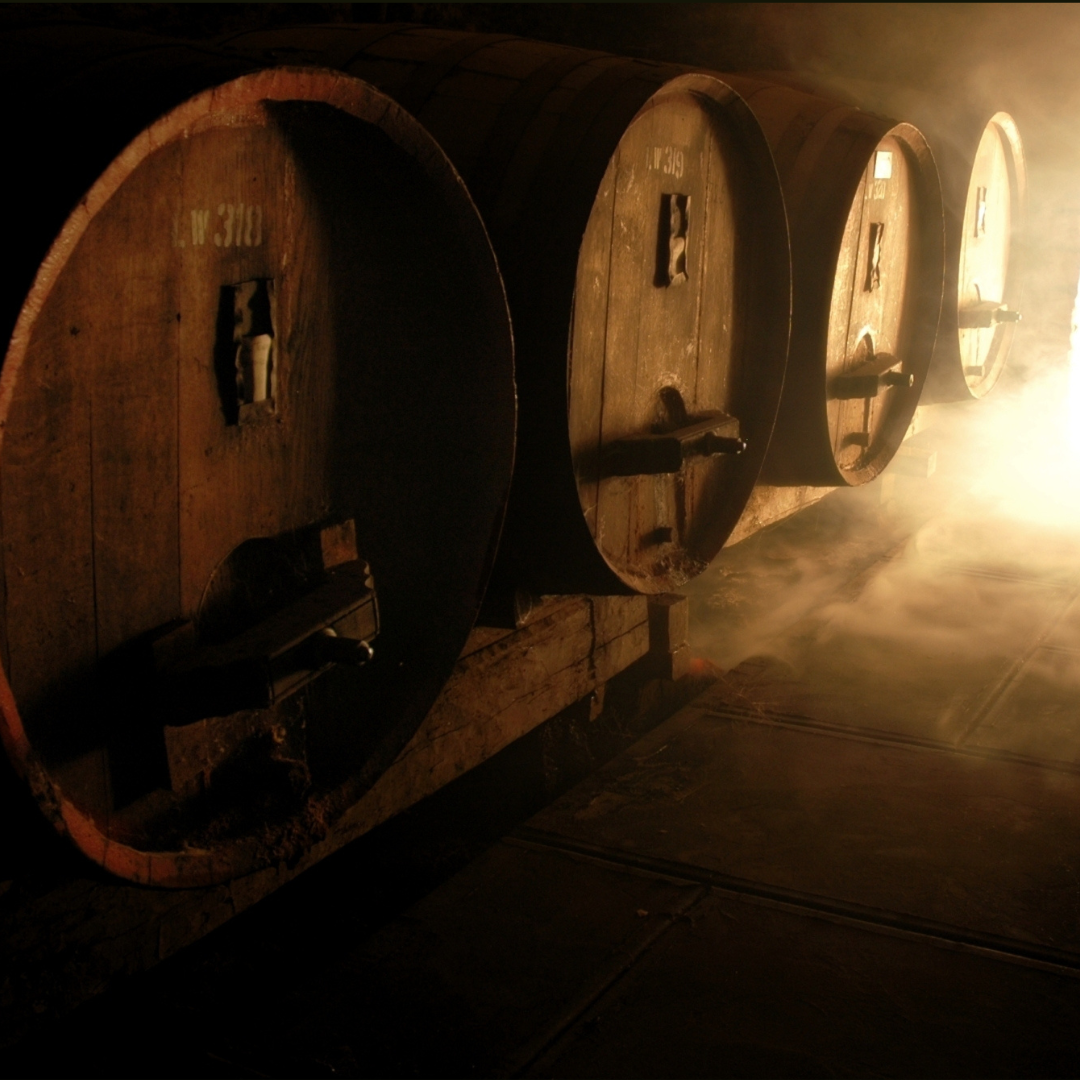1945 – A very small, but very fine vintage which aged extremely well.
1946 – Average at best, generally not declared as a vintage year.
1947 – A vintage year for most houses, producing very fruity and very long lived wines.
1948 – A huge harvest, providing fruit for good quality non-vintage blends, but few houses declared a vintage.
1949 – A high quality vintage, producing concentrated yet elegant wines, high acid levels also giving longevity to the blends.
1950 – Average year, large harvest mostly used for non-vintage blends, very few houses declared a vintage.
1951 – Small below average year, that produced thin, mean, acidic wines, no vintage produced.
1952 – Excellent vintage – great length and balance and widely declared as a vintage. Well cellared examples can still excite.
1953 – Another excellent vintage in a row, ripe concentrated fruit with exceptional balance and harmony.
1954 – A large harvest of good, medium-weighted fruit which was mostly used for non-vintage blends.
1955 – Another large harvest that was very much underrated at the time. The wines had excellent fruit and acidity, and evolved well.
1956 – Average quality wines, no vintage declarations.
1957 – After savage spring frosts which decimated the vineyards – a small harvest of ordinary quality. No vintage produced.
1958 – Another ordinary vintage, no vintage declared.
1959 – After a string of poor vintages, this proved to be an exceptional year. Rich, powerful and concentrated wines, that the best examples can still impress today. Universally declared as a vintage.
1960 – Average year at best, no vintage declared.
1961 – Difficult conditions at the beginning of the season led to a very tiny crop, the ripening conditions however improved over the course, and were declared a vintage year by most houses, producing rich, full-bodied wines with balancing acidity.
1962 – Another small harvest, with cool growing conditions initially that was saved by a very warm September. The vintage wines tended to be fruity, supple and elegant.
1963 – Mediocre year, poor weather throughout leading to an average size crop only suitable for non-vintage blends.
1964 – An excellent year, with the season showing hot and dry growing conditions that produced ripe, full-bodied wines, that aged very well.
1965 – A dreadful year where poor vintage conditions led to serious outbreaks of rot – No vintage declared.
1966 – After serious frosts and hail throughout the growing season, the harvest was saved by excellent weather during the picking, giving elegant, well-balanced wines that most houses declared a vintage.
1967 – Mostly non-vintage wines produced after the region suffered from damaging widespread winter frosts which was compounded by the development of grey rot.
1968 – Dreadful year, with heavy spring frosts, followed by hail, then rot, that produced thin, mean wines used for blending at best.
1969 – The beginning of the season was questionable with heavy rain and variable temperatures leading to mildew. Thankfully good, dry conditions during harvest enabled some vintage wines to be produced – but with slightly higher acid levels than normal.
1970 – After a cold, wet start to the season, conditions improved greatly and were to produce the largest harvest on record. Most houses chose to declare the vintage.
1971 – An unsettled growing season with violent storms in July followed by hail in August, was saved by a dry and hot September. A very small vintage of stylish, elegant wines that have proved their age-worthiness.
1972 – Very poor year, extremely wet and major frost damage, giving very average wines – with no vintage being produced.
1973 – After a very fine growing season, heavy rains during September led to serious rot outbreaks in the vineyard. Some pleasant, lighter wines were produced with marked acidity, which has kept some in good stead.
1974 – Very patchy year, with difficult conditions throughout, rain set in just before vintage, with the wines being of variable quality. Growers who picked early fared the best.
1975 – A wet and cold winter led to a late bud-break, followed by a hot growing season, leading to a late harvest of ripe healthy grapes, showing excellent fruit and acidity.
1976 – A drought year with record heat levels across Europe, which led to a very early harvest starting on September 1. It was to be a very large vintage of super ripe fruit, rich, powerful wines but relatively low in acidity. They have held up remarkably well in spite of their acid levels through sheer concentration.
1977 – Poor weather through summer led to a late harvest of lightweight wines. No vintage declared.
1978 – A very small harvest due to poor flowering and the incidence of rot. What few vintage wines were produced were mostly dilute and forgettable.
1979 – A warm growing season produced a bumper crop of healthy grapes. Although it rained throughout the harvest, sugar and acid levels remained excellent giving wines of character and length, which have aged very well.
1980 – A cool and late growing season, there were few vintage examples, mostly a non-vintage year.
1981 – A particularly wet vintage, also frost and hail damage in May. A small harvest, mostly non-vintage with a few stylish vintage exceptions.
1982 – A bumper crop of very healthy grapes were harvested after a season of near perfect growing conditions (even rain during the first week of harvest could not detract from the quality). Classic, long-lived wines that have shown well over time.
1983 – A second bumper crop vintage that harvested near perfect grapes, rich, ripe with perfect balance and length. The wines have proven themselves with age.
1984 – Pretty miserable vintage, cold, wet, with little sunshine. Not to be a vintage year.
1985 – Severe winter temperatures saw the gauge plummet to 25 degrees centigrade which was to destroy about 10% of all vineyards. The weather dramatically improved in the early autumn and although it was to be a very tiny harvest, it was of excellent quality. Almost universally declared, these are wines of great balance, length and character that still continue to improve. One of my favourite vintages.
1986 – Spring weather was poor, however the summer was warm and sunny, but did suffer from sporadic rain. Rot was an issue in certain areas, but with judicious selection some very fine vintage wines were produced.
1987 – Damp weather throughout summer promoted grey rot in the vineyards; however fine weather during harvest helped give a large crop that was useful for non-vintage blends. The only vintage release I have come across begged a very questionable decision on whether the house should have released it at all.
1988 – The first in a trio of brilliant vintages – it was a vintage that required careful selection after some rain at harvest and was smaller than 1987. Powerful, firm wines that were very classic, requiring more time to open than the 89 or 90.
1989 – The vintage had ideal growing conditions, a hot, dry summer with plenty of sunshine that produced ripe healthy grapes. The 89s have always been forward, fleshy and seductive. This is not to say that they won’t age – they have simply been a pleasure to drink from the outset.
1990 – There was some minor frost damage early in the season. The hot dry summer resulted in a second crop which helped replace the affected crops. Sugar and acidity levels were excellent and the vintage was universally declared. They show wonderful harmony and structure and the best examples will continue to develop and improve.
1991 – Frosts early in the season had caused some concern – then a hot dry summer promised much. Ten days before harvest was to begin, the weather broke causing issues of dilution. There were a couple of vintage releases, but mostly a year for the production of NVs.
1992 – This should have been a large harvest of healthy grapes, but it was also a turning point year. Due to the semi-collapse of the market, new restrictions on yield and press fractions had come into force. This resulted in fruit being left on the vine or discarded on the ground. There were some vintage wines made but it was not generally declared.
1993 – After good flowering and warm conditions there were high hopes for an excellent vintage. Unfortunately, just as harvest was to begin, the rains hit and continued to pour throughout the whole of vintage – leading to serious issues of dilution. There were few vintage wines, mostly non-vintage material.
1994 – Like 1993, the year was full of high prospects, however ten days before harvest, heavy rains hit again – once more dashing growers' hopes. Good, decent non-vintage material was produced but it did require careful selection.
1995 – After the four previous vintages where greatness was promised and then destroyed by rains at vintage time, this harvest was to return smiles to growers' faces. A good harvest of healthy fruit for non-vintage blends and some top-notch vintage releases.
1996 – Thought by many to be the best vintage of the last 50 years. Its strength is that the grapes were harvested at optimum ripeness with unusually high sugar levels but also with a high level of acidity to balance (a combination rarely seen). These are terrific, outstanding wines that are worthy of laying down in the cellar.
1997 – This was the true ‘Indian Summer’ vintage, severe frosts in the beginning of the year followed by months of very cold, dry weather, which weakened the vines to attacks of mildew. The sun finally appeared in August, the grapes ripened well, and not a drop of rain fell during the harvest. Some excellent vintage wines have been produced.
1998 – A contrast between heatwaves and bouts of torrential rain. Staggered picking helped growers select for ripe fruit. Quality and quantity of the harvest surpassed expectations with grapes showing good health, sugar and acid levels.
1999 – Due to heavy rain in the autumn of 1998, vegetative growth from budburst to berry set was rapid. No spring frosts, and all varieties flowered at the same time. Summer saw a heavy contrast between rain and heatwaves. Good ripeness levels were achieved, and many high-quality wines were produced.
2000 – Probably too tempting for the marketing departments not to release a vintage with the magic “triple zero” tag. A vintage useful for NV blends but perhaps not of the quality for vintage wines.
2001 – The worst vintage in living memory – highly unlikely to see any vintage produced.
2002 – Generally a warm, dry vintage with showers in both August and September followed by dry conditions. Described as 'an early-maturing year brought about by dry soil conditions that accelerated ripening.'
2003 – The drought year of incredible heat and temperatures across Europe. Ripe material was abundant, but acidity levels were low in many cases. Concentration of fruit not an issue but pH levels were high.
2004 – Early reports suggested an excellent vintage with a wonderful balance of sugars and acidity. Very lengthy and desirable wines have evolved across many key producers.
2005 – Wide-ranging and varied conditions ensured a mixed overall vintage. Warm weather leading into harvest helped ensure ripeness, though lower acidities resulted in bolder, drink-now styles.
2006 – An up and down vintage: bright and warm initially, then cool in August before warming again in September. Ripeness and good acidity were achieved for the most part.
2007 – Spring was above average and early budding occurred. Summer was inconsistent and damp, but favourable conditions before harvest led to a fair yield. High acid and good balance achieved.
2008 – A gloomy start to the season but warming conditions in August and September helped bring a positive crop. Wines have shown impressive balance and ageing potential.
2009 – Early vintage signs were poor, but a quality summer produced a clean crop. Approachable and pleasurable champagnes with fair acid. Many reserve stocks replenished.
2010 – Selective and taxing harvest due to disease pressure from spring rains. Results varied widely depending on vineyard management and timing.
2011 – Harvest driven by early dry heat followed by summer rain. Achieving balance was difficult and results were inconsistent.
2012 – A great vintage overall, despite early frost and storms affecting yields. August weather improved significantly, delivering excellent fruit and balance. Many houses declared vintage wines.
2013 – A likely vintage year, although not as impressive as 2012. Late harvest and difficulty achieving ripeness, with some damage from hail and storms.
2014 – Positive sentiment around the vintage, with good ripeness and acidity generally achieved. Not all major houses declared, including Krug and Dom Pérignon.
2015 – Strong potential for a grand vintage. Low disease, good ripening, and dry summer conditions produced smaller, more intense fruit. A vintage year to watch for future releases.
Search
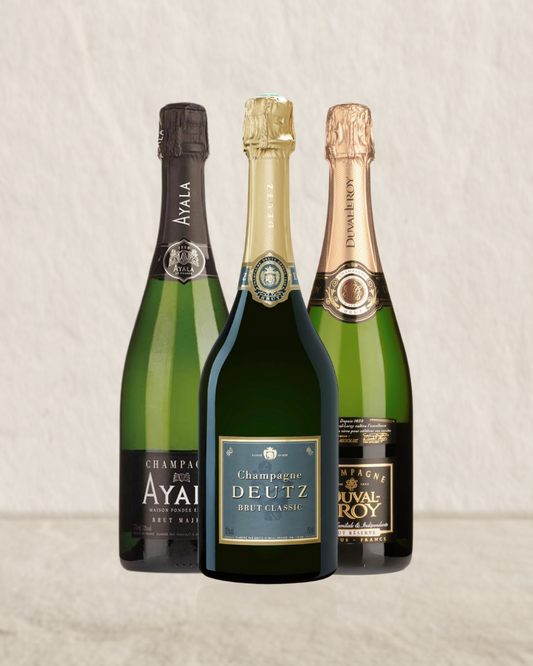 "Say it with 3" Champagne NV Tasting Value Pack
"Say it with 3" Champagne NV Tasting Value Pack
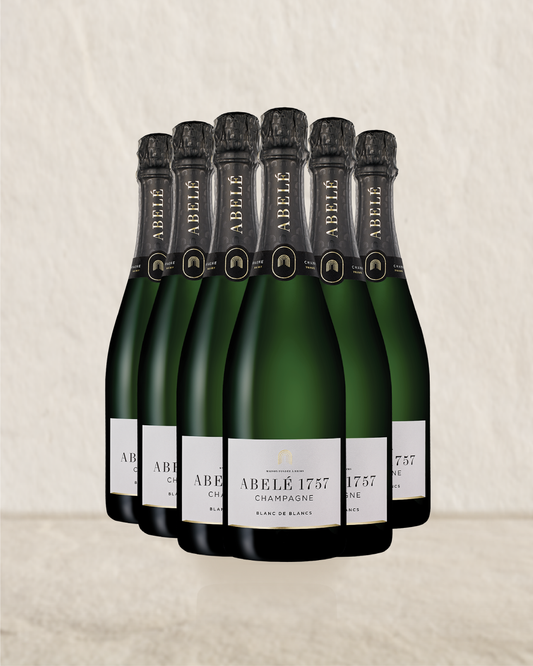 ABELÉ 1757 Blanc De Blanc NV 6 Pack
ABELÉ 1757 Blanc De Blanc NV 6 Pack
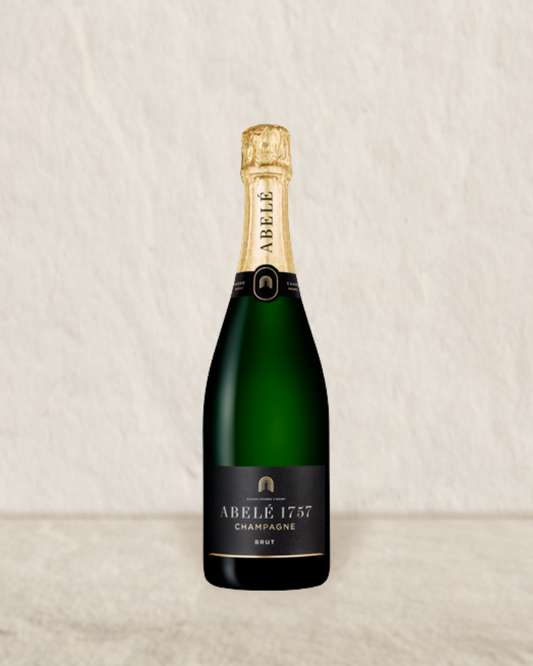
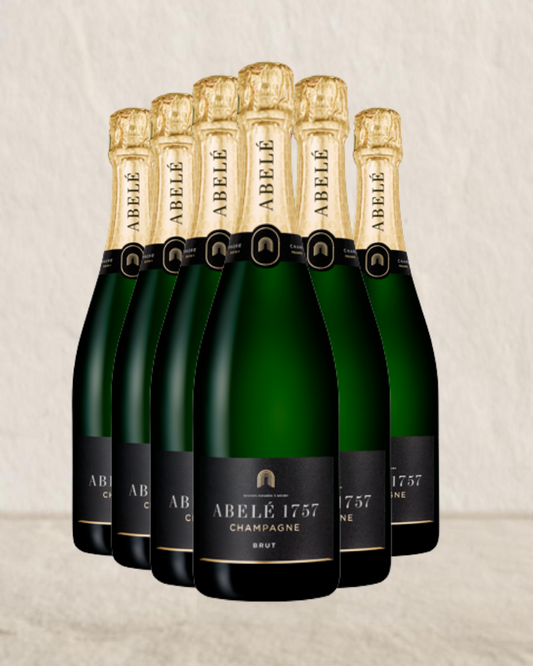 ABELÉ 1757 Non Vintage 6 Pack
ABELÉ 1757 Non Vintage 6 Pack
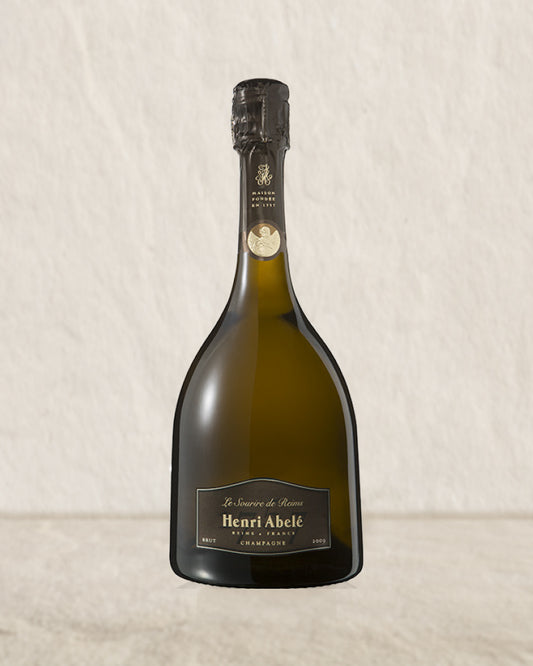 ABELÉ 1757 Sourire De Reims 2009
ABELÉ 1757 Sourire De Reims 2009
Popular Products

Vendor:
Champagne Gallery
- Regular price
- $230.00
- Regular price
-
$255.00 - Sale price
- $230.00

Vendor:
ABELÉ 1757
- Regular price
- $600.00
- Regular price
-
$650.00 - Sale price
- $600.00


Vendor:
ABELÉ 1757
- Regular price
- $420.00
- Regular price
-
$450.00 - Sale price
- $420.00

Vendor:
ABELÉ 1757
- Regular price
- $275.00
- Regular price
-
$325.00 - Sale price
- $275.00




